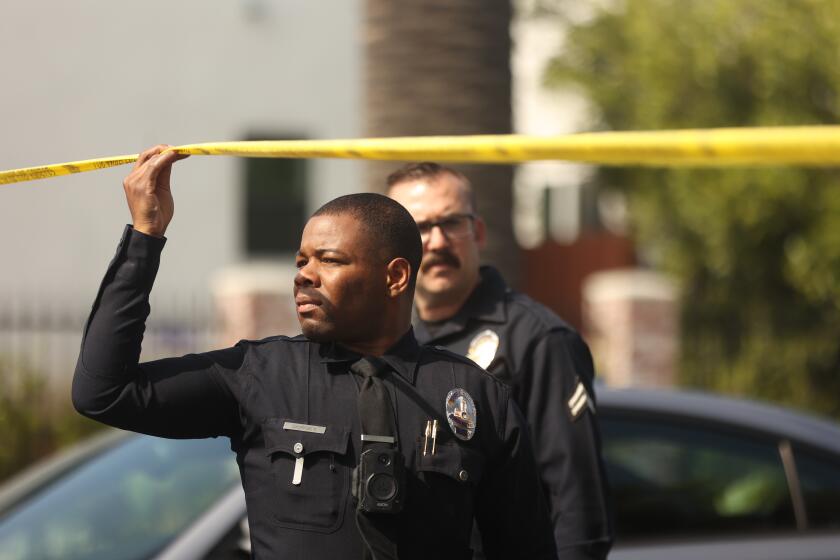California Gears Up to Vie for $4-Billion Atom Smasher Site : California Hopes to Be Site of World’s Top Atom Smasher
- Share via
California is poised to leap into the competition for a $4-billion atom smasher that, if ever constructed, would make the state the world leader in high-energy physics.
The facility, a high-energy accelerator known officially as the Superconducting Super Collider, has been under consideration by the federal government since it was first recommended by a panel of top physicists in July, 1983. It would be many times larger than any other atom smasher anywhere in the world.
Although the proposal is still in very preliminary stages, competition is fierce and growing among several states, each of which is scrambling to prove that it has the best location and environment for what would be the crown jewel of high-energy physics.
“We decided it’s high time we had the effort going,” said William R. Frazer, senior vice president for academic affairs of the University of California.
Will Map Strategy
Frazer, a physicist, was singled out by several other scientists as the prime mover behind the effort to convince the federal government that if the facility is ever built, it should be built in California. Next Tuesday, a committee of some of the state’s leading physicists will meet in Frazer’s office at the University of California, Berkeley, to map the strategy.
The committee is composed of representatives from the state’s top research institutions, including the University of California, Caltech and Stanford. The state budget for 1985-86 includes $500,000 to finance the committee’s work.
“This is a technical committee,” Frazer said. Its purpose will be “to find us an inventory” of sites in California that might be suitable for such a facility.
The Superconducting Super Collider would use a circular tunnel more than 100 miles in circumference to smash protons together at nearly the speed of light. By contrast, the largest accelerator in the United States today, at the Fermi National Laboratory near Chicago, is only four miles around.
Nature of Matter
The proposed machine would collide particles at 20 trillion electron volts, yielding debris that scientists believe could reveal much about the nature of matter.
The accelerator would require an area of at least 30 square miles, and it would have to be built underground in an area that would not be expected to be destroyed by an earthquake during 50 years of its projected life. At full operation it will use about 160 megawatts of power, enough to supply the needs of a city of about 125,000 residents. Those requirements rule out many sites in California, but Frazer and other members of the committee believe that suitable sites in the state probably can be found.
“California is not all that small,” said Richard Taylor of the Stanford Linear Accelerator Center. “There are plenty of places where you can look for 30 miles and not see much.”
While declining to be specific, Taylor said the “most likely sites seem to be along the foothills of the Sierra, somewhere between Sacramento and Fresno.” The proximity of major research institutions, plus the high standard of living that could be used to help attract top scientists to the facility, are considered pluses on the side of the state.
California, however, is far from alone in believing that it might be the perfect host for the facility.
“In one form or another, most states have expressed a variety of interests” in the project, said Jeff Sherwood, a spokesman for the U.S. Department of Energy, which would fund the accelerator.
Congress and the President would first have to be convinced of its value. Those hurdles notwithstanding, many states have mounted aggressive efforts to capture the prize should it become available.
Illinois in Running
Initially, Illinois was believed to have the inside track because the super collider could be built there as an expansion of the accelerator at the Fermi lab.
The existing accelerator would serve as an “injector,” according to Margaret Pearson, a lab spokesman. Protons would be fired from the Fermi Lab accelerator into the tunnel of the new facility, giving them a running start and presumably reducing the cost of the new unit.
However, other costs might offset the savings, including the cost of tunneling in that area. Illinois has launched an aggressive effort, headed by the president of one of the state’s largest engineering firms, to win federal support.
Texas also is coming on strong, although that state’s proposal is not yet complete. There have been suggestions that Texas would contribute the land needed for the project.
Criteria Studied
The Department of Energy has encouraged states to propose sites. The proposals are then to be submitted to a joint panel of the National Academy of Sciences and the National Academy of Engineering for final selection.
More to Read
Sign up for Essential California
The most important California stories and recommendations in your inbox every morning.
You may occasionally receive promotional content from the Los Angeles Times.













